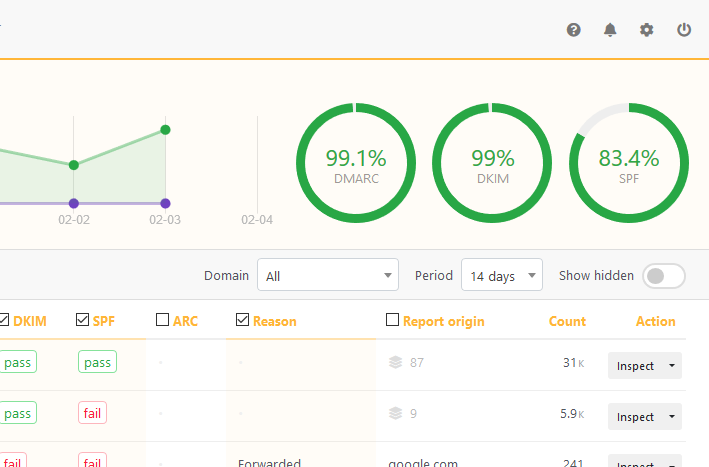Suitability
URIports is exceptionally well-suited for Managed Service Providers (MSPs) due to its comprehensive reporting capabilities across various security policies and its 'Team Access' feature from the Stone tier, making it ideal for managing multiple clients. For enterprise organizations, its extensive feature set, including OpenID Connect and Certificate Monitor, positions it as a strong contender for complex, multi-faceted security needs.
Conversely, for Small to Medium Businesses (SMBs) primarily seeking basic DMARC monitoring without the broader security context, URIports might present an initial learning curve due to its extensive features. While the 'Sand' tier exists, larger SMBs needing more than just DMARC will find higher tiers more appropriate.
MyDMARC is particularly suitable for Small to Medium Businesses (SMBs) looking for a straightforward, effective DMARC solution without the added complexity of broader security reporting. Its clear interface and tiered pricing make it highly accessible for teams focused solely on email authentication. For Managed Service Providers (MSPs), it offers clear DMARC monitoring, but may lack some advanced multi-tenancy features or client-specific dashboards beyond simply adding more domains.
For enterprise organizations with advanced, multi-faceted email security or compliance needs beyond core DMARC, MyDMARC's more focused feature set might not provide the comprehensive oversight required. Its strength lies in DMARC essentials, which is excellent for its target audience, but can be a limitation for larger, more complex environments.











































 0 / 5(0)
0 / 5(0)
 0 / 5(0)
0 / 5(0)



